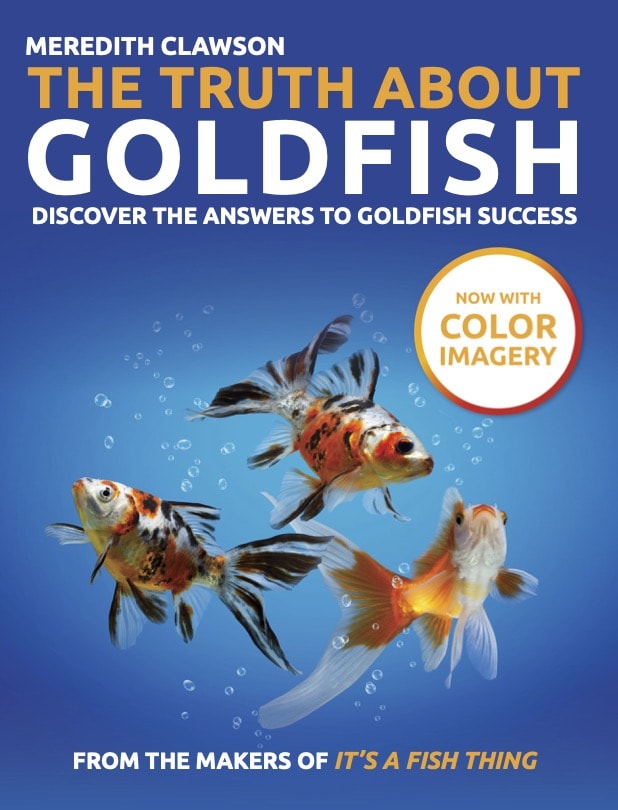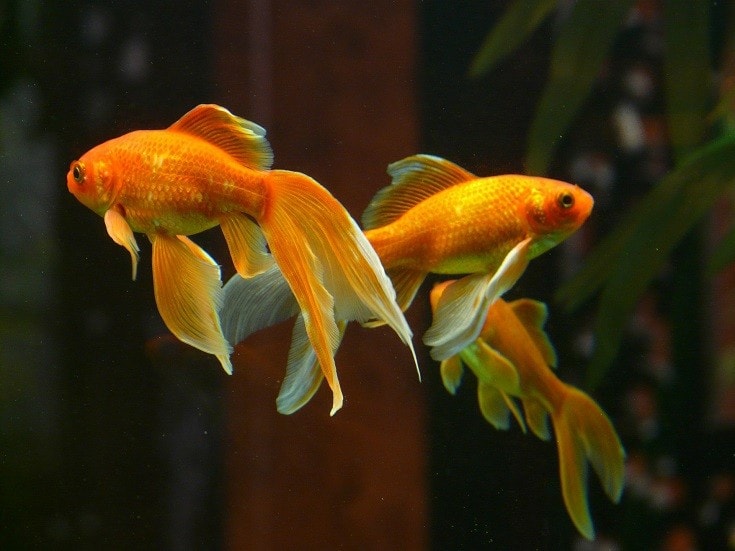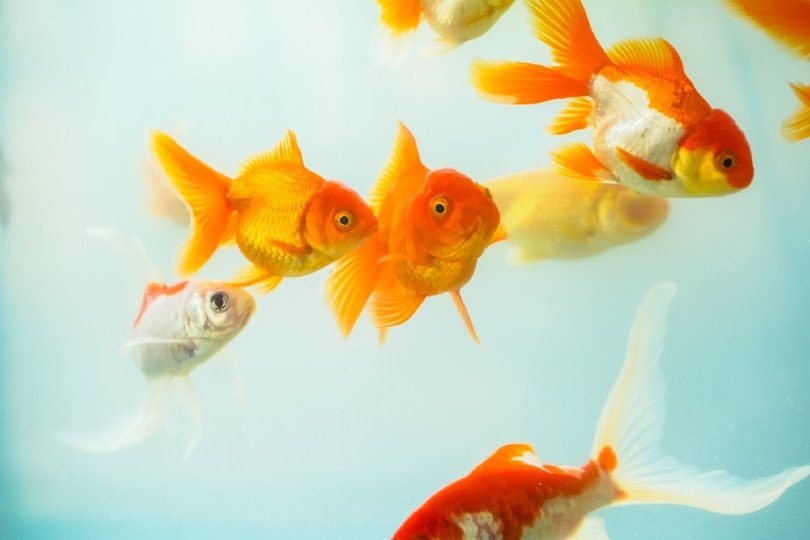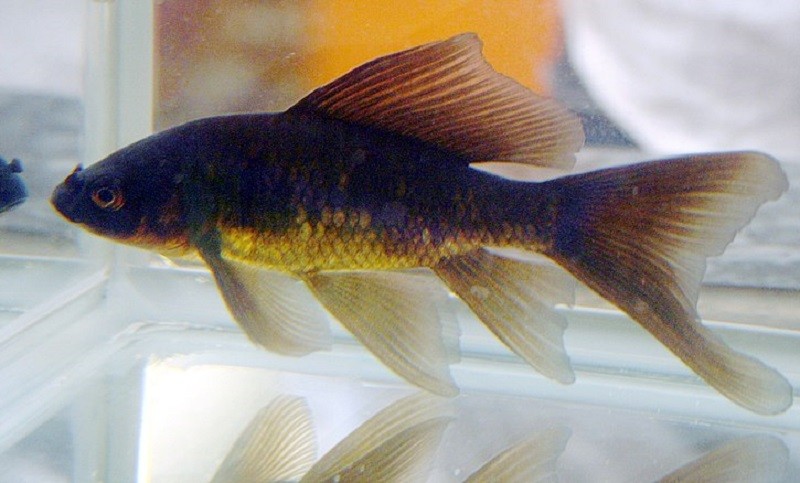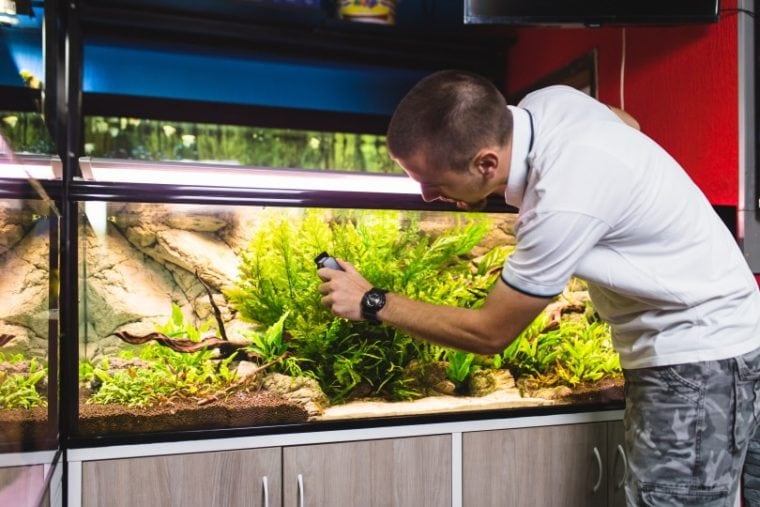
Nothing takes away from the beauty of your goldfish tank quite like cloudy water does. It’s so unsightly to look at, and it can make it more difficult for you to enjoy the beauty of your Goldfish and the time and effort you’ve put into designing your tank. But how do you get rid of cloudy water in your Goldfish tank?
What Causes Cloudy Water?
There are multiple things that can cause cloudy water, so you’ll need to narrow down the cause to treat it. One of the most common causes of cloudy water is keeping a tank that is overstocked or lacks adequate filtration for the number of fish in it. If this is the case, the cloudy water will likely worsen anytime you stir up the substrate or your fish dig in it.
If your tank is newly set up, you may be experiencing new tank syndrome, leading to cloudy water. This has to do with the nitrogen cycle attempting to become established. Once your tank cycles, the water cloudiness should be reduced or eliminated. You may also see cloudiness in a new tank if you didn’t thoroughly rinse your substrate before adding it to the tank.
Other common causes of cloudy water include algae growth and buildup on the glass, as well as algae or diatom growth. A dead fish or another animal decomposing in the tank somewhere can also lead to water cloudiness.
The 6 Ways to Get Rid of Cloudy Water in Your Goldfish Tank
1. Determine the cause
The best way to treat the cloudy water in your aquarium is to identify what is causing the cloudy water in the first place. The next steps are beneficial no matter what, but identifying a specific cause can help you more quickly and efficiently clear the water in the tank. Thoroughly check your tank for the presence of algae and diatoms, dead animals, and detritus or dust in the substrate.

2. Ensure your tank is cycled
You can verify if your tank is cycled by checking your water parameters. A healthy, fully cycled tank should have no ammonia or nitrite. Nitrate levels can safely be up to 20ppm, and some people let them go as high as 40ppm with no negative results. Some cycled tanks are efficient enough that they will have no nitrates, but this is extremely uncommon.
Check your water parameters with a test kit made specifically for aquariums. Many people grab the test strips because they are often affordable and easy to use. However, test strips can produce inaccurate results. Liquid test kits are far more reliable for checking your water parameters.
Understanding the intricacies of water filtration can be tricky, so if you're a new or even experienced goldfish owner who wants a bit more detailed information on it, we recommend that you check out Amazon for the best-selling book, The Truth About Goldfish.
It covers all you need to know about creating the most ideal tank setup, goldfish care, and more!
3. Clean the glass
There are special tools made specifically for cleaning aquarium glass. If you notice that there is algae or diatoms that are really stuck on the glass, you may need to use a razor blade or something similar to scrape the glass clean. Many people like to use Mr. Clean Magic Erasers for cleaning aquarium glass as well.
If you have an acrylic tank, you’ll need to be very selective when it comes to cleaning the sides of the tank. Acrylic scratches easily and cannot be buffed clear the same way glass can.
4. Clean your filtration system
Your filter requires routine cleaning and maintenance to stay in good working order. Ideally, you should keep filter media that can be cleaned and reused. This will help to maintain your tank’s cycle. Frequently changing out your filter media can crash your cycle.
When cleaning filters and filter media, it’s ideal to use dirty tank water to do the cleaning. Your goal should be to remove visible waste, not to eliminate beneficial bacteria. Tap water may kill off your beneficial bacteria, but dirty tank water has been dechlorinated and may help maintain some of the beneficial bacteria colonies in the filter and filter media.
5. Perform a water change
Ideally, you should perform a water change after you’ve cleaned the glass so you can vacuum out anything you scraped from the glass. You may want to remove half of the water you intend to, clean the filter and filter media, and then perform the remainder of the water change. This will ensure that any waste and detritus knocked loose from the filtration system gets cleaned from the water.
How much water you change at any given time is dependent on your water parameters, the size of your tank, the number of fish you have, and the type of filtration you have. If you perform overly large water changes, then you may shock your fish if the water quality is poor to begin with.
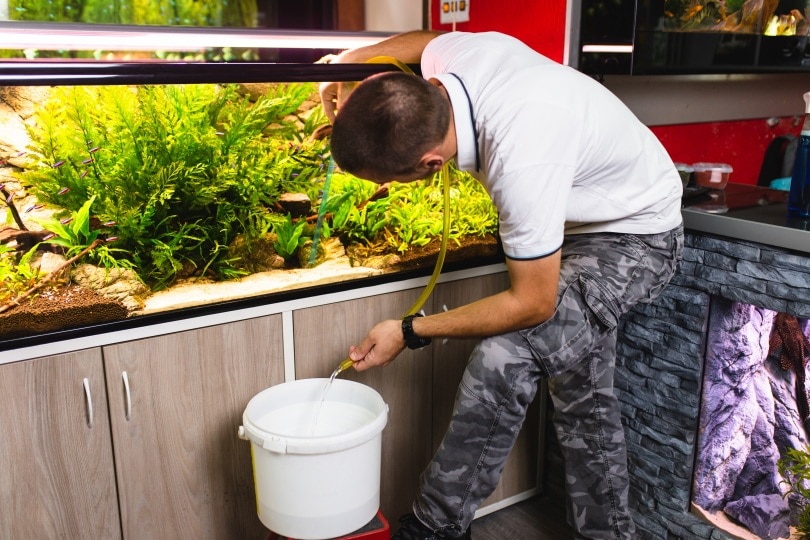
6. Make adjustments to lighting and filtration if needed
If you were able to determine that your water clarity issues were related to water quality or algae growth, you may need to make some changes to your setup. Invest in a better-quality filtration system, or add a second filter to your tank if your current filtration system isn’t keeping up with the needs of your tank.
If algae is a problem, you may need to evaluate the amount of light your tank is receiving in a day. Too much light can lead to algae growth, so make sure you aren’t running your light too high or for too long on a regular basis.
Conclusion
The top cause of cloudy aquarium water is poor water quality. You can help keep your water clear and prevent further issues by maintaining high water quality in your tank. This can be achieved by monitoring your water parameters, performing regular water changes, and making sure your filtration system is appropriate for the size of your tank and the number of fish you have in it. It can be frustrating to deal with cloudy water, but you have multiple steps to help you achieve crystal-clear water in no time.
Featured Image Credit: hedgehog94, Shutterstock


